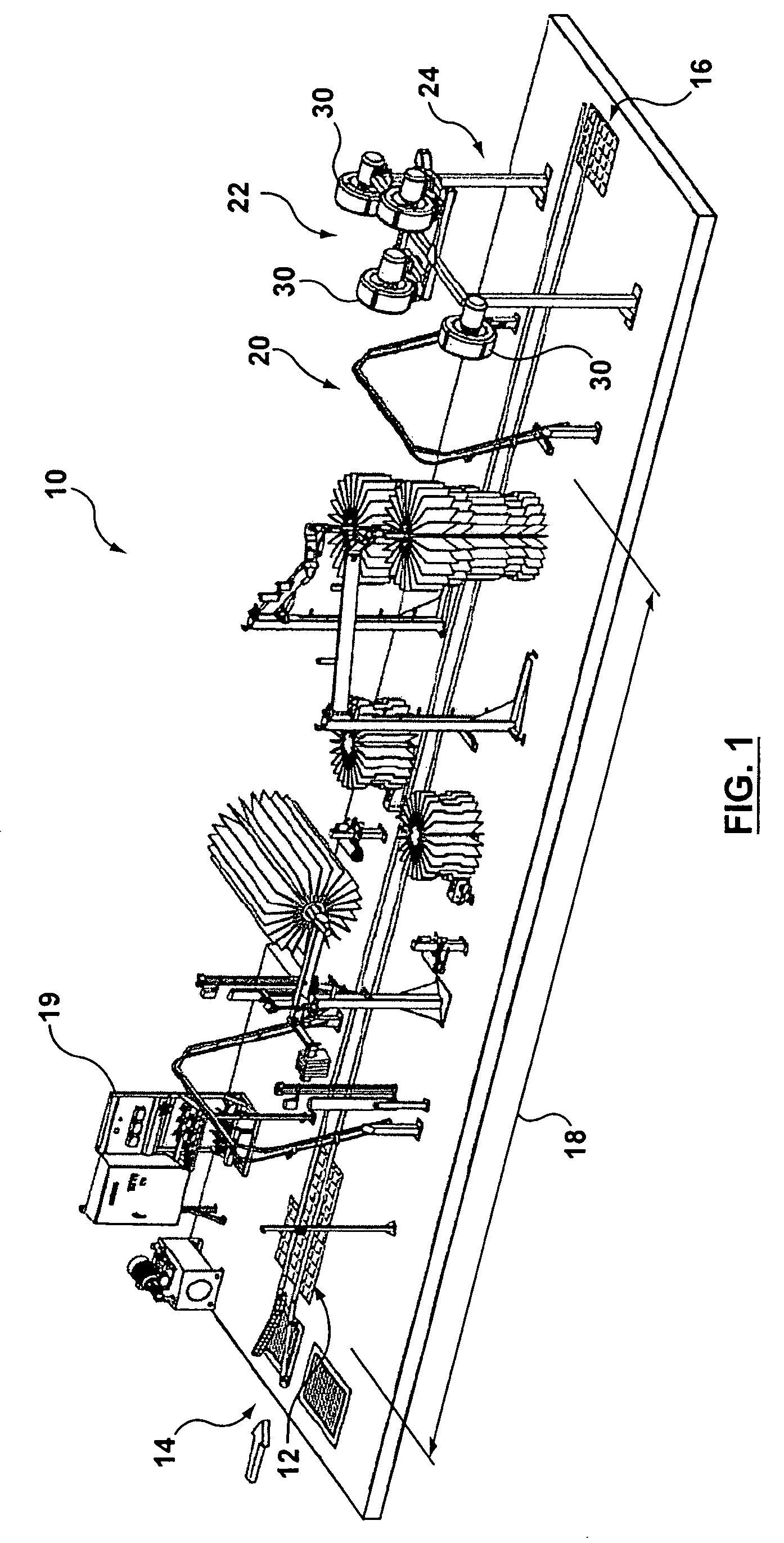Intake control for blower in vehicle wash system
a vehicle wash and blower technology, applied in drying machines, lighting and heating apparatus, drying machines with progressive movements, etc., can solve the problems of disadvantageous starting and stopping electric motors to achieve intermittent blower operation, not significantly addressing the intermittent nature of blower control systems, etc., to minimize possible damage to vehicle components, optimize the effect of flow and optimize drying performan
- Summary
- Abstract
- Description
- Claims
- Application Information
AI Technical Summary
Benefits of technology
Problems solved by technology
Method used
Image
Examples
Embodiment Construction
[0042]As referenced above, wash systems typically include a drying section to remove water from the vehicle surface, employing high velocity and high volume air, before the vehicle exits from the wash system. Illustrative examples disclosed hereinafter make reference to drying sections included in conveyor type wash systems, although the blower systems may also be applicable to rollover or other types of wash systems, with any required suitable modification.
[0043]FIG. 1 illustrates an exemplary layout of a conveyor type wash system 10, the basic components of which are known in the art. Vehicles (not shown) may enter the wash system 10 at position 14 and may engage a conveyor system 12. The conveyor system 12 may provide for the movement of each vehicle as it proceeds through system 10 and ultimately exits at position 16.
[0044]Upon entry to wash system 10, a vehicle may pass through a wash section 18, which may be comprised of a series of brushes, as shown in FIG. 1. Alternatively, ...
PUM
 Login to View More
Login to View More Abstract
Description
Claims
Application Information
 Login to View More
Login to View More - R&D
- Intellectual Property
- Life Sciences
- Materials
- Tech Scout
- Unparalleled Data Quality
- Higher Quality Content
- 60% Fewer Hallucinations
Browse by: Latest US Patents, China's latest patents, Technical Efficacy Thesaurus, Application Domain, Technology Topic, Popular Technical Reports.
© 2025 PatSnap. All rights reserved.Legal|Privacy policy|Modern Slavery Act Transparency Statement|Sitemap|About US| Contact US: help@patsnap.com



